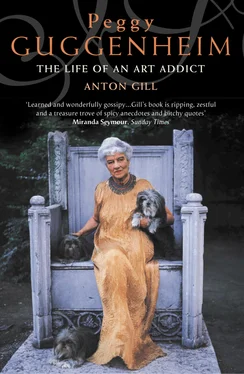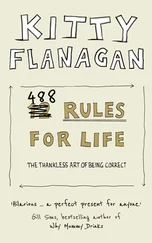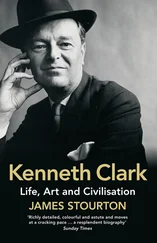1 ...6 7 8 10 11 12 ...34 Using some of her dowry, Fanny bought a stock of bed linen, bolts of cloth, lace and ribbons. With them she set up a small shop in the family home, and did so well that David’s none-too-impressive fortunes improved. He called himself a wool merchant, and started a sideline in sealing wax. He had to travel frequently on business, so that the upbringing of the children was left, to his misgiving, to his wife.
Travellers from outside Baiersdorf started to use Fanny’s shop, and by the mid-1820s their oldest son, Josef, had begun a modest currency-exchange business. In those days much of Germany consisted of small principalities, and coinage was not standardised, so Josef did a brisk trade, taking a small profit from each exchange. It was a short step from changing money for the convenience of users of his mother’s dry-goods store to running a regular currency exchange, and by the age of twelve the precocious Josef was even handling the occasional US dollar, among other truly foreign coinage.
Fanny was ambitious for all her children, but Josef was the apple of her eye. However, by the mid-1830s, the German rural economy was declining, as more and more people migrated to the increasingly industrialised cities, and Jews, subject to severe legal restrictions, found it ever harder to make ends meet. Some moved to the cities, but received no welcome there. Others began to look outside their native land. As Jewish migrants moved through the country westwards from oppression farther east, in Poland and Russia, word spread about the opportunities awaiting those who could afford, or who dared, to emigrate to America. In time, so great was the emigration that a duality arose in New York Jewish society not only between the insiders and the outsiders, but between those ‘older’ emigrants with German names, and those who mainly came later, with Russian and Slavonic names – these last being at the bottom of the social heap.
Fanny Seligmann had a strategy. Joseph was now fourteen, and she took the unprecedented step in her family of sending him to university in nearby Erlangen, where for two years he studied German literature, and learned some Latin, Greek, English and French. By the time he had graduated at sixteen he wanted nothing more than to spread his wings and go to the United States. Father David, now forty-six years old, a conservative, dour man, raised objections: emigrants were widely regarded as failures, and besides, there were rumours that Jews in America lost sight of their religion. But Fanny was adamant, and although it took her some time to persuade her husband, Josef was allowed to set off, aged eighteen, in July 1837, in the company of eighteen other men, women and children from the town. Fanny had managed to scrape together the money for his passage, and from somewhere too – possibly relatives in her home town of Sulzbach – she’d obtained $100 in US currency, which she carefully sewed into Josef’s knee-breeches. Then she waved him goodbye. She would never see him again. In 1841, aged only forty-two, Fanny died. She had given birth to her eleventh child, a daughter, two years earlier. It was clear that Fanny had been the backbone of the family. Soon after her death, her widowed husband, with several children still at home to look after, ran into financial difficulties.
The journey from Baiersdorf to Bremen, where Josef’s party was to take ship, took seventeen days, travelling overland in two wagons. The crossing on the schooner Telegraph took a further sixty-six days. Including Josef’s party, there were 142 people crammed on board. Passage cost $40, and included a cup of water and one meal a day – which unfortunately consisted of pork and beans, so Josef quickly had to ignore his father’s parting injunction not to forget the Jewish dietary laws. Even so he lost weight on the journey – no bad thing, as he always had a tendency towards corpulence. On the journey he also fell in love, with the daughter of his group’s leader Johannes Schmidt. But unlike Meyer’s, it was simply a shipboard romance, ending in a tearful parting when the Telegraph docked at New York.
Josef, who immediately anglicised his name – to Joseph Seligman – on arrival in America, as all his brothers who followed would, had more on his mind than regretting the girl. He was a young man driven by ambition, and with a similar motivation to Meyer’s: in money lay security. Soon after his arrival he set off on a hundred-mile hike – he wasn’t going to waste any money on transport, and must have been innocent of the perils of the road – down to Maunch Creek, Pennsylvania, where he had an introduction to a cousin of his mother’s. Maunch Creek wasn’t much of a place, but Joseph quickly got a job, at $400 a year, as financial clerk to a canal-boat building company. He made friends with the boss; the Seligmans would always have the knack of striking up good relationships with the right people, in this case Asa Packer, a small-town businessman who would prove to be an invaluable contact. Packer went on to become a multi-millionaire, the founder of a university, the president of a railroad, and a US Congressman.
After a year, Joseph turned down the offer of a generous pay-rise and invested the $200 he’d saved in various portable goods. With them he set off on foot, carrying a two-hundred-pound pack, peddling to farms in the region. It was hard and sometimes dangerous work, but Joe was tough and single-minded. He was also a brilliant salesman, and within six months he had made a profit of $500, part of which he sent off to his two next-eldest brothers, Wolf and Jakob, who were longing to join him, as their passage-money.
Wolf and Jakob – renamed William and James on their arrival in America – were not all-rounders like Joseph. William was idle, and liked the good life, which annoyed his older brother. James however, while not particularly good at accountancy, turned out to be the best salesman of all of them. By 1840 the brothers had bought a place to use as their headquarters in Lancaster, fifty miles west of Philadelphia; the following year the next brother, Jesaias (who became Jesse), came over aged fourteen, and quickly proved to be the accountant the enterprise needed. Over the next two years, growing profits enabled Joseph to get the rest of his family, including his father, over to the New World.
James, handsome, confident and intelligent, showed an aptitude for salesmanship which surpassed even his oldest brother’s, and in 1846 he was delegated to open the New York branch of the family’s fast-expanding dry-goods business. At about the same time Jesse and his youngest brother Henry (Hermann) were establishing another branch at Watertown, in upstate New York. There, Jesse made friends with an army lieutenant stationed nearby. This would turn out to be another fortunate relationship, since the lieutenant’s name was Ulysses S. Grant.
The Seligmans continued to live modestly, even after their business expanded to cover most of the country. As a result of the Gold Rush to San Francisco in the 1850s they were able to reap mighty profits, since gold fever led to enormous price hikes. A blanket bought for $5 could sell for $40, and a quart of whiskey went for $25. Profits from California became the mainstay of the Seligman organisation.
But a new dimension soon crept into their interests. Much of the profit from the west coast took the physical form of gold bullion, which the New York branch used not only to buy new stock, but also to trade on the market. Banking in the United States didn’t become formally regulated until after the Civil War, and there was no bar to anyone entering the field. It didn’t take long for the Seligmans to realise that interest never stopped earning. They loaned, bought and sold IOUs, and eventually offered deposit accounts. By 1852 Joseph, aged thirty-three, was a major New York banker and investor. The only mistake the family made, based no doubt on their traditional thinking, was to avoid tying anything up in property: by and large, they rented. Thus at one point they passed up the chance to buy about one-sixth of Manhattan.
Читать дальше












